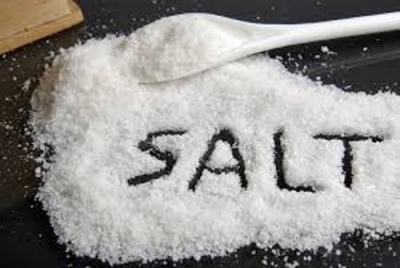
The website Saltworks calls the common salt (sodium chloride) a “timeless ingredient.” And goes on to tell you why.
Salt must have been discovered accidentally, we don’t know when. But there are records to show that in 6050 BC (some 8 thousand years ago), salt was used. Around 2700 BC, in a research paper on pharmacology published in China, more than 40 kinds of salt and descriptions of two methods of salt extraction were mentioned. Nomads spreading westward carried salt, and Egyptian art of 1450 BC records salt making. Phoenicians traded salt with parts of their Mediterranean empire. In all the civilizations, salt has been used for cooking, preserving and in cultural, economic and religious practices.
The expression “not worth his salt” comes from the practice of trading slaves for salt in ancient Greece. Special salt rations given to early Roman soldiers were known as “salarium argentum,” (“sal” is salt in Latin) from which we get the word “salary.” Another theory says the word “salad” also came from “salt”, since early Romans added salt to the green leafy vegetables they ate. In ancient times, salt was a highly valued product, and its production was legally restricted. So it was used as currency. The Bible has 30 references to salt including the phrase “salt of the earth.” Salt stood for purity.
World history has close connections with salt. The city of Tuzia in Bosnia-Herzegovina is named for “tuz,” Turkish word for salt. Salzburg, Austria, has made its four salt mines major tourist attractions. Bolivia’s main tourist attraction is a hotel constructed entirely of salt. In the 16th Century, when the Dutch blockaded the Iberian salt mines, Spain went bankrupt and king Philip II was defeated. Mahatma Gandhi’s resistance to British colonial rule was marked by his Dandi march to make salt.
Portuguese and Spanish fleets used the “wet” method of preserving fish onboard with salt, while the French and English fleets used the “dry” or “shore” salting method. Thanks to this, the French and British fishermen became the first European inhabitants of North America since the Vikings a half century earlier.
In America, the Erie Canal, opened in 1825, was known as “the ditch that salt built” because salt was its principal cargo. Syracuse, NY, is proud of its salt history and its nickname, “Salt City.” The important role of salt in the history of Kanas is captured in a salt museum in Hutchinson, KS. In the American West, a “salt war” was fought at El Paso, Texas.
Salt is an extraordinary ingredient. No kitchen can function without it. Plants need salt to survive. It is a great food preservative. Salt is used in a lot of industries. In the 19th Century, techniques using salt were used to make photographic prints. Salt-glazed pottery is still popular in the U.S.
Picture Credit : Google
